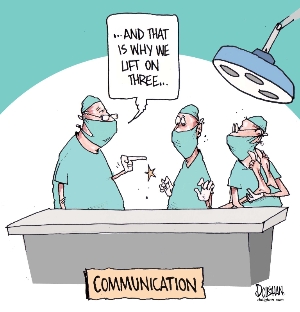AngelPrint
About Angelprint | Toll Free: 1 888 7 MY ANGEL
Entries in communications planning (1)
How Your Company Can Save Time, Save Money, and Communicate Better.
Planning How Your Business Communicates With Your Target Markets
By Kevin Popović, Communications Director, Ideahaus®
Entrepreneurs know that a business plan is critical for funding. Marketers know that marketing plans are key to management and success. Sales pros have a plan to approach target markets, they wouldn’t dream of selling without it. But what about communications?
Yeah, there's a plan for that.
A true communications professional will have a document that shows what they have planned, when it goes live, and how long it impacts their audience. Add budgets and hours, and you have a document that keeps every department in the company on track, and every CEO in the loop. With every dollar critical, it would be irresponsible to not have something in place.
This is how we do it.
A couple caveats from the podium: First, this only works if you follow the process. Improvising along the way voids my warranty that this will deliver a comprehensive, efficient and strategic plan. Second, you only get out of it what you put into it. — kp
1. Review the Categories of Communications.
Create a list of the types of communication you’re documenting. Even in our meetings there’s an occasional, “Oh yeah, I didn’t think about that.” Throw everything in the pile to begin with — even the improbable.
Now talk about each of them.
Why? Because the word “communications” is like the word “art.” Everyone in both sales and marketing has their own, slightly different interpretation of what the word means to them based on their roles, and it skews depending on which department you come from.
2. Document Your Communications Assets.
Documentation starts with the items already in play. Assets that are bought and paid for, that can contribute towards a cohesive communications approach to each of your target markets: marketing, sales, events, web development, product development, etc. This includes your outside agencies too: public relations, advertising, production, media — everyone.
CEO Tip: Want to find out what really exists and what doesn’t? Ask for it and tell them you may want to use it next week for something. You’ll find out quickly if it does exist, and if it’s ready to go. — kp
3. Detail the Assets.
Having a list of assets is a start, but what about the details? Sure you’re sending an e-mail, but what’s it about You have a Facebook Place page but how do you get to it? Account for what your company does know and you’ll identify what you don’t know. Even this rough estimate provides more information than previously available.
4. Schedule the Assets in Play.
Each of the assets of your plan will be released on a specific date to your target audiences. Which date? What time? And who is responsible? This is where consideration begins for planning, development, creative, production, and media.
5. Estimate the Impact.
The impact of communications in the market space tends to include more than just the day it was released. E-mail sent on Monday may not get addressed until Wednesday. Print ads breaking on the first in a monthly trade publication attract readers for at least the first two weeks before trailing off.
Discuss these with your team to realistically estimate the impact of each piece with your target markets and update your plan to reflect the “coverage” created for the month.
CEO Tip: Some marketers have a hard time realizing one of their kids is uglier than another. Not every piece is going to be a star performer, and some are going to flop. David Ogilvy was noted for saying, “Half of my advertising is wasted, and the trouble is, I don’t know which half.” Be wary of false promises— set realistic expectations, and get excited when it performs better than expected. — kp
6. Estimate the Investments.
Most companies have limited resources and even more limited budgets. Understanding the impact of a plan on your company early can prevent turbulence later and keep your team moving forward.
To start here, assign hours to every item. How long will it take to update the e-mail? To update the social media platform? To edit the new video? Not sure? Guess. You can update this later, but with a first pass you can reasonably evaluate if your team can deliver on time.
And what about costs? Your salaried employees have a cost assigned to them. Outside costs are an even bigger concern.
7. Develop Your Strategy.
A strategic approach to a communications plan means something different to everyone you’ll ask. Calling for it here tells you when you’re prepared to discuss strategy, but not how you should do it.
Some think it’s more than just being book smart or college educated. ROI is critical, but a good strategy also includes efficiency, communicating well, and the ability to get the most out of every opportunity.
Better, Faster and Cheaper.
Every company communicates better with a plan. And although this may be easier for the experienced, it’s crucial for every business, and in the long run it saves time and money.
Invest the time to develop your communications and you’ll gain a perspective that improves what you say and how you say it. And in communications, isn’t that what it’s all about?
Want to learn more about communications planning? Contact Kevin Popović at kp@ideahaus.com or connect with him on LinkedIn.
Want to learn more about Ideahaus®? Visit the Ideahaus® website.
Phone: 760.967.0492 | Fax: 760.967. 0496
3614 Ocean Ranch Blvd. | Oceanside, CA 92056

